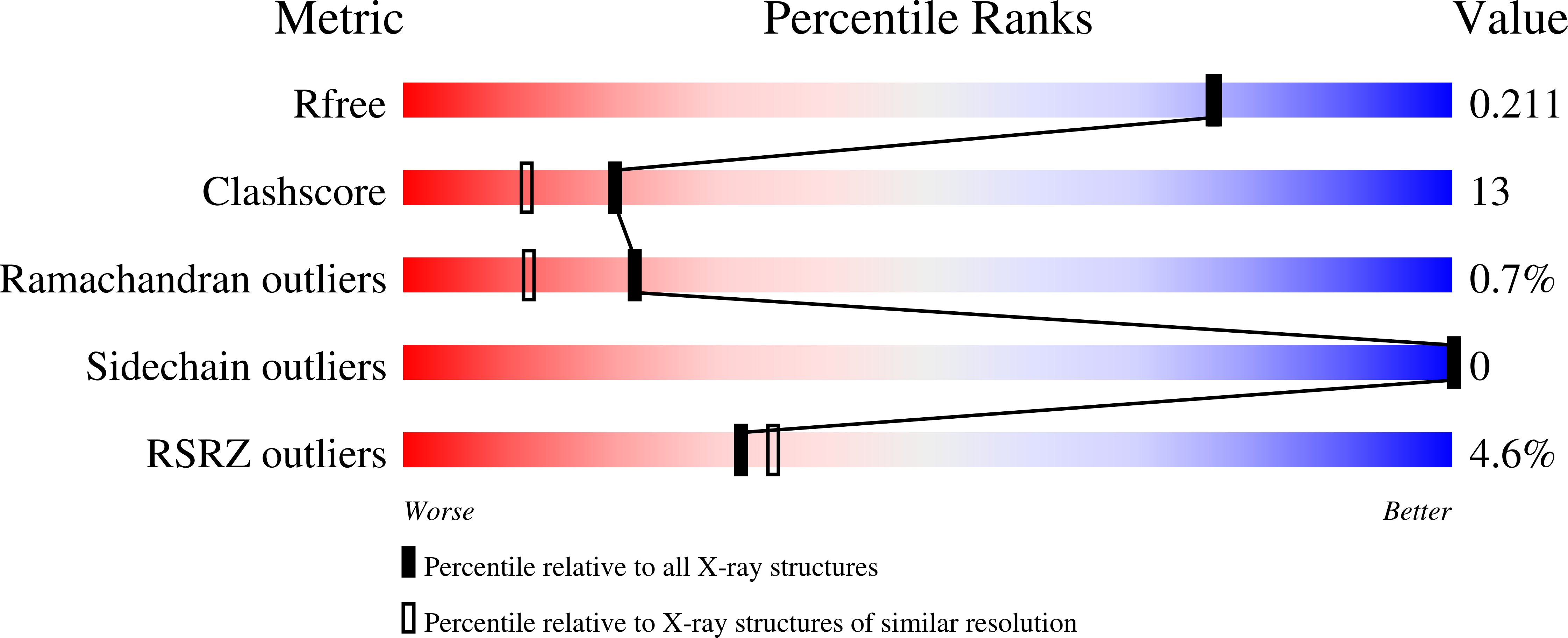N-Terminal Finger Stabilizes the S1 Pocket for the Reversible Feline Drug GC376 in the SARS-CoV-2 M pro Dimer.
Arutyunova, E., Khan, M.B., Fischer, C., Lu, J., Lamer, T., Vuong, W., van Belkum, M.J., McKay, R.T., Tyrrell, D.L., Vederas, J.C., Young, H.S., Lemieux, M.J.(2021) J Mol Biol 433: 167003-167003
- PubMed: 33895266
- DOI: https://doi.org/10.1016/j.jmb.2021.167003
- Primary Citation of Related Structures:
7LCP, 7LCQ - PubMed Abstract:
The main protease (M pro , also known as 3CL protease) of SARS-CoV-2 is a high priority drug target in the development of antivirals to combat COVID-19 infections. A feline coronavirus antiviral drug, GC376, has been shown to be effective in inhibiting the SARS-CoV-2 main protease and live virus growth. As this drug moves into clinical trials, further characterization of GC376 with the main protease of coronaviruses is required to gain insight into the drug's properties, such as reversibility and broad specificity. Reversibility is an important factor for therapeutic proteolytic inhibitors to prevent toxicity due to off-target effects. Here we demonstrate that GC376 has nanomolar K i values with the M pro from both SARS-CoV-2 and SARS-CoV strains. Restoring enzymatic activity after inhibition by GC376 demonstrates reversible binding with both proteases. In addition, the stability and thermodynamic parameters of both proteases were studied to shed light on physical chemical properties of these viral enzymes, revealing higher stability for SARS-CoV-2 M pro . The comparison of a new X-ray crystal structure of M pro from SARS-CoV complexed with GC376 reveals similar molecular mechanism of inhibition compared to SARS-CoV-2 M pro , and gives insight into the broad specificity properties of this drug. In both structures, we observe domain swapping of the N-termini in the dimer of the M pro , which facilitates coordination of the drug's P1 position. These results validate that GC376 is a drug with an off-rate suitable for clinical trials.
Organizational Affiliation:
Department of Biochemistry, Faculty of Medicine and Dentistry, Membrane Protein Disease Research Group, University of Alberta, Edmonton T6G 2R3, Alberta, Canada; Li Ka Shing Institute of Virology, Faculty of Medicine and Dentistry, University of Alberta, Edmonton T6G 2E1, Alberta, Canada.

















